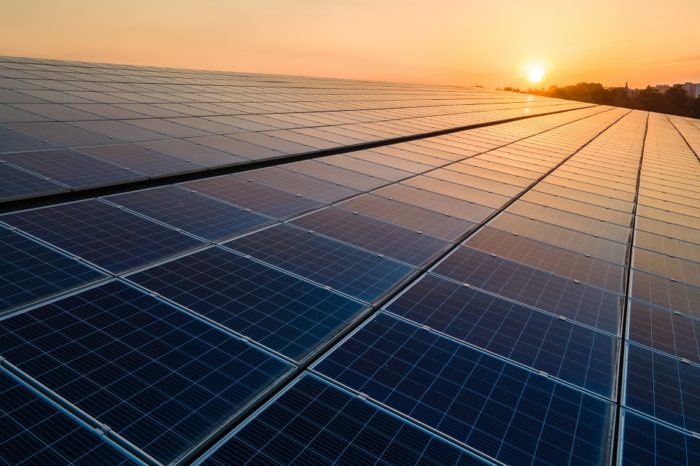Allianz Trade analysis: Europe’s energy shock does not mean de-industrialization

In 2022, increases in corporate utility bills were contained, thanks to government interventions and the long pass-through from wholesale energy prices to retail contracts, which are for the most part not fully indexed. Unlike an oil shock, a gas and electricity shock does not pass through quickly to the real economy because household and business utility bills are mostly based on fixed price and/or government-controlled contracts. Moreover, gas prices have been trending down in recent weeks thanks to an unusually mild winter. However, Allianz Trade analysts expect prices to rise before next winter as Europe faces increasing competition for energy supplies from China.
European companies now face rising utility bills, depending on the degree of fiscal intervention to limit the acceleration of energy prices. Most electricity contracts will have been renewed in 2023, and electricity prices in 2023 will be set at the level of index-linked contracts in 2022. However, government interventions can be substantial, helping to significantly reduce energy bills through subsidies, tax rebates or price caps, even for index-linked contracts. Business gas utility bills are expected to increase by more than +100% in 2023 compared to 2021 in Italy and Spain, for example, compared to around +60-70% in Germany, France and the UK, while electricity bills are expected to increase by around +35% in Germany but +80% in Italy and Spain.
However, as more contracts come up for renewal, analysts expect utility prices to accelerate, below 40% in Germany compared to 2021, compared to 90% in Italy and Spain. However, this will not change anything in terms of price competitiveness in the European industry relative to the US. Energy consumption generally accounts for around 1-1.5% of output in the manufacturing sector. Although price competitiveness is much more sensitive to changes in labour costs and exchange rates, the energy price gap between the US and Europe would lead to generally modest losses in manufacturing employment and output, even if Spain appears weaker. However, there are signs that Europe has started to lose market share compared to other countries.
The analysis of the loss of competitiveness of European exports would not in principle be good news for Romania either. Even if the price of gas does not remain at its recent low, it is expected that its share in the cost of production will not be as burdensome as last year.
“While in terms of the impact of energy costs we could talk about a smaller magnitude compared to 2022, non-energy factors will prevail. The wage cost-exchange rate binomial is likely to increase its intensity in 2023 and through the second component. The EUR/RON exchange rate has been remarkably stable, which is not surprising considering the growing foreign exchange reserves and the prudent monetary policy of not fuelling inflation also through the depreciation of the national currency”, says Mihai Chipirliu, CFA Risk Director, Allianz Trade.
However, the increase in the current account deficit to over 9% of GDP at the end of January signals a potential turnaround. The need to adjust this deficit against the background of a gradual slowdown in inflation in recent months could at least lead to a slight depreciation of the national currency by 1-2 percentage points, especially in the second half of the year.
Among the sectors that could benefit from such a turn would be those that feed exports – such as car and component production, furniture production or agriculture (provided stocks are monetised for the latter).
A recent survey by France’s national statistics institute, INSEE , shows that more than 50% of French corporations operating in the services sector and 25% in industry report no increase in energy prices in 2022. Moreover, according to the study, 45% of companies operating in the services sector have an electricity contract based on a government-controlled price (‘tarif réglementé’). In addition, in 2022 electricity utility bills are expected to increase by around +15% in the services sector and +50% in industry, i.e. less than +20% for the economy as a whole (see Figure 2). This is a very modest increase compared to electricity prices that have soared in wholesale markets. On the other hand, Eurostat reports increases in electricity utility bills only for index-linked contracts, which have risen much more strongly, by more than +60% in 2022 (Figure 2).
Analysts forecast much faster growth this year as fixed contracts are renewed. Thus, French companies in the service sector as well as firms in industry expect a new growth of +30 respectively +65% in 2023. Electricity bills grow by around 115% in industry and 45% in services between 2021 (before the war between Ukraine and Russia) and 2023 – a truly massive shock, hard to overestimate.
The energy price gap between the US and Europe has increased substantially, particularly in the industrial sector. As a major gas producer, the US is much better protected than Europe against rising energy prices. Since the war between Ukraine and Russia, Europe’s benchmark wholesale gas price has doubled relative to its US equivalent.
Generally, the European manufacturing sector did well, with the exception of the aluminium and steel sectors. Energy-intensive sectors or those sensitive to foreign competition, such as Italian electronics, held up remarkably well. Aluminium production held up in North America and the Gulf countries, but declined in Central and Western Europe, where high regional electricity costs led to the closure of some smelters. Steel production is also down severely in Europe, more so than other major producers.
Exchange rates and labour costs are important factors in price competitiveness
Production costs are mainly determined by labour costs, profit margins and consumption of inputs (including energy). To assess price competitiveness in Europe, Allianz Trade analysts looked at the Bank of Italy’s Price Competitiveness Index (PCI), which is similar to a real exchange rate index but more comprehensive in terms of relative price competitiveness.
The PCI indicates a sharp deterioration for the US (relative to all partners) from 2021 onwards, mainly due to the strong appreciation of the US dollar against most currencies. In contrast, the price competitiveness of European countries has remained relatively stable and that of China has improved significantly. Also, producer prices have risen at the same pace in the US, Germany and Italy since the start of the Ukraine-Russia war, but have risen faster in the UK and Spain, which explains why the UK and Spanish PCIs have improved less than those of Germany and Italy.
European output prices have not risen more than in the US – or not much more – because unit labour costs, the most important determinants of output prices, have risen less than in the US . Since 2019, they have risen most in the US (+13%) and least in Italy (only +6%). However, unit labour cost increases in other European countries do not lag far behind the US (e.g. +11% in France and Spain). At the same time, the margin ratio in the manufacturing sector (which we represent by the ratio of value-added price to unit labour cost) has improved in post-war European countries, with the exception of Italy. For each European country (UK, Germany, France, Italy, Spain), analysts make quarterly estimates (sample from 1992 to 2022) of output and employment by sector based on the Bank of Italy’s ICP. Thus, industrial energy prices are expected to increase by around +75% in Germany, +90-100% in the UK and France and +170-180% in Spain and Italy.
The energy crisis has not led to a diversion of manufacturing trade from Europe to the US
Analysing the distribution of imports from the EU-15, experts found that the US and Qatar are among the very few exporters that managed to visibly increase their market shares during 2022, exceeding pre-pandemic levels. The US global market share increased to 6.8% by Q3 2022, compared to Q1 and the pre-pandemic average of 6.4%. In contrast, exporters that saw their market share fall below Q1 levels and below the pre-pandemic average include Germany (-1pp in Q3 vs. Q1), Spain (-0.4pp), Italy (-0.3pp) and France (-0.2pp). A number of European exporters managed to increase their market share in 2022 and more above pre-pandemic levels (e.g. Ireland and Poland), along with some Asian exporters (e.g. China, Vietnam, India and Taiwan).
We are looking at the total unit labour costs of the economy because the manufacturing sector uses a lot of intermediate consumption from other sectors of the economy (essentially services). Therefore, changes in labour costs in other sectors directly affect the price competitiveness of the manufacturing sector
Exporters who are visibly losing market share in EU15 imports are almost exclusively in Europe (in agri-food, machinery and electrical equipment, metals and transport) – but not to the benefit of the US. The detailed product breakdown (in more than 1200 categories according to the HS4 classification) shows that the origin of EU15 imports has changed somewhat for some goods in the agri-food, metals, machinery and electrical equipment and transport sectors.
What does Europe’s energy crisis mean for corporate profitability? To find out, Allianz Trade has made an estimate based on company-level data. As no statistical significance of energy prices was found, the energy shock is both the energy gap and the difference between aggregate global energy supply and demand.
According to analysis by Allianz Trade analysts, if the 2 percentage point energy gap scenario (estimated for 2022 and 2023) remains persistent for the foreseeable future, it would imply a -1.3 percentage point loss of profitability for large European corporations. Thus, from a sectoral point of view, industrial firms could lose up to -1.7pp, and from a national point of view, French companies will experience a -1pp lower return on assets (ROA). UK firms’ profitability would be affected by -2.4pp, while Dutch firms’ profitability would fall by -3.4pp. The estimates show no significant impact on the profitability of large German and Italian companies. This is probably due to the relatively low energy intensity of large firms.
As wage pressures are increasing in Europe, analysts have analysed the impact of labour costs on profitability, resulting in a +1% increase in wages and a decrease in ROA of around 30 bps for European companies. Within the region, Norway appears to be the most sensitive to labour costs, with an elasticity of more than 1 (i.e. when wages increase by +1%, ROA decreases by more than 1pp). The second most sensitive country to rising labour costs is Germany, where a +1% increase leads to a -0.8pp decrease in profitability. From a sectoral point of view, unsurprisingly, services have the highest elasticity (close to 1), while in industrial sectors it is closer to -0.4.
Lower corporate profitability clouds business investment prospects in Europe
The investment rate of non-financial corporations (as a percentage of gross value added) has so far shown no cracks in euro area countries. In particular, Italy’s investment rate has risen sharply since the pandemic, while the UK’s investment rate has shown a clear downward trend since 2018.
The shock to corporate profitability will translate into a -1.2 percentage point decline in the UK investment rate, -1.7 percentage points in France and -2.1 percentage points in Spain. In monetary terms, this would mean an annual investment loss of almost €40 billion in France, €25 billion in Spain and £25 billion in the UK.















